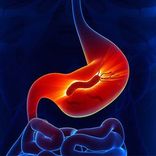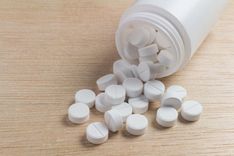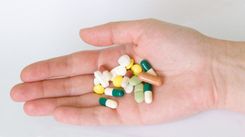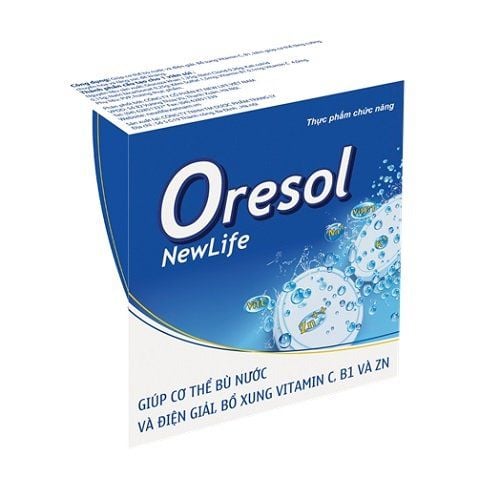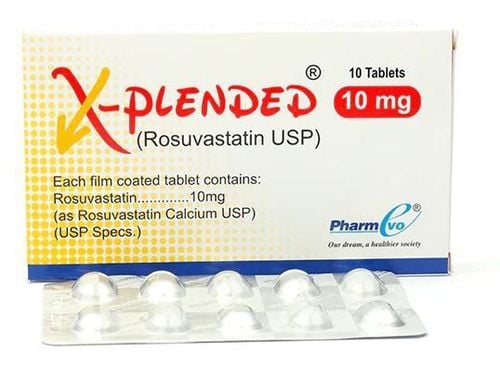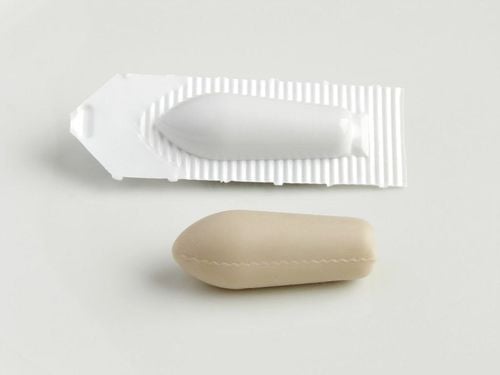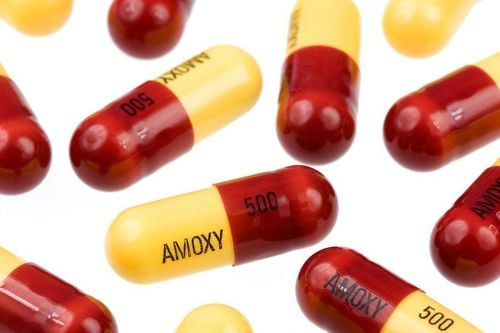Lipanthyl 200m is a medication belonging to the group of lipid-lowering drugs. It helps reduce cholesterol and triglycerides in the blood, thereby decreasing the risk of vascular diseases caused by hyperlipidemia.
1. What is Lipanthyl 200mg? Uses of Lipanthyl 200mg
Lipanthyl 200mg contains Fenofibrate 200mg, which is part of the fibrate class of lipid-lowering drugs. Fenofibrate is a derivative of fibric acid, which alters lipid levels in humans through the activation of Peroxisome Proliferator-Activated Receptor type α (PPARα).
By activating PPARα, Fenofibrate enhances lipid hydrolysis and eliminates triglyceride-rich particles from plasma. This mechanism reduces LDL and VLDL (containing apoprotein B) and increases HDL (containing apoprotein AI and AII).
Additionally, by altering the synthesis and metabolism of VLDL components, Fenofibrate increases LDL clearance. Elevated LDL levels are associated with a higher risk of atherosclerosis, leading to coronary artery diseases and cerebrovascular conditions.
According to research, Fenofibrate can reduce blood cholesterol levels by 20-25% and triglycerides by 40-50%.
The link between hypercholesterolemia and atherosclerosis, as well as its association with vascular diseases, has been well-established. Fenofibrate significantly increases HDL cholesterol by 10-30% in patients. Other benefits of Fenofibrate:
- Uric acid excretion: Fenofibrate promotes uric acid excretion through urine, significantly reducing blood uric acid levels by approximately 25% in hyperlipidemic patients.
- Apoprotein modulation: It increases apoprotein A1 and decreases apoprotein B, improving the apo A1/apo B ratio—an important atherosclerosis risk factor.
- Anti-platelet aggregation: Fenofibrate's anti-platelet aggregation effects have been demonstrated in animal studies and confirmed in human trials, with observed reductions in platelet aggregation and certain inflammatory markers.
2. Indications and Contraindications of Lipanthyl 200mg
2.1. Indications
Lipanthyl 200mg is indicated for:
- Primary hypercholesterolemia and hypertriglyceridemia, or combined forms (Types IIa, IIb, III, IV, and V dyslipidemia) in patients unresponsive to dietary and non-pharmacological treatments. It is particularly recommended when additional risk factors, such as hypertension or smoking, are present.
- Secondary hyperlipoproteinemia: When persistent abnormalities in lipid levels remain despite addressing the underlying condition (e.g., dyslipidemia in diabetes mellitus). It should be used in conjunction with dietary and exercise regimens.
2.2. Contraindications
Lipanthyl 200mg should not be used in the following cases:
- Liver impairment, including biliary cirrhosis or unexplained liver dysfunction.
- Gallbladder disease.
- Severe chronic kidney disease.
- Children, for whom alternative dosages may be more appropriate.
- Acute or chronic pancreatitis, except cases caused by severe hypertriglyceridemia.
- Photosensitivity reactions: History of allergic reactions or phototoxicity during treatment with fibrates or ketoprofen.
- Combination with other fibrates due to increased risk of side effects.
- Hypersensitivity to Fenofibrate or any excipients listed in the formulation.
- Relative contraindications: Breastfeeding; Combination with HMG-CoA reductase inhibitors (statins) for lipid-lowering.
3. How to Use and Dosage of Lipanthyl 200mg
Lipanthyl 200mg is available in capsule form and is administered orally. It should be taken with meals. During treatment, lipid levels in the serum should be monitored to evaluate the therapeutic response. If no improvement is observed after a few months, consider adjusting the dosage or exploring alternative treatments. Dosage guidelines:
- Adults: The recommended dose is 200mg per day, equivalent to 1 capsule of Lipanthyl 200mg.
- Elderly patients: If kidney function is normal, the usual adult dosage can be applied. For those with renal impairment, adjust the dose according to kidney function.
- Renal impairment: Dose reduction is required. Lipanthyl is not recommended for severe chronic kidney disease.
- Hepatic impairment: Not recommended due to insufficient data on its safety.
- Children: The safety and efficacy of Fenofibrate in children and adolescents under 18 years of age have not been established. Therefore, its use is not recommended in this population.
4. Side Effects of Lipanthyl 200mg
As with other fibrates, the use of Lipanthyl may lead to adverse effects, including:
- Muscle-related conditions: Cases of diffuse muscle pain, tenderness, weakness, and rare severe rhabdomyolysis have been reported. Symptoms typically resolve after discontinuation.
- Some other side effects, which are usually less common and milder, include digestive disorders such as indigestion, elevated transaminase levels, and skin reactions like rash, itching, hives, and rarely reported photosensitivity. In some cases, even after many months of patients taking the medication without any side effects, photosensitivity reactions have still occurred on the skin, such as rash, blisters, and eczema on areas exposed to sunlight or artificial UV light (UV lamps).
- Rare side effects: Decreased hemoglobin and white blood cell count; Immune disorders, headache, dizziness, and embolism causing pulmonary thrombosis; Hair loss, pancreatitis.
Discontinue use and consult a physician if side effects occur.
5. Precautions When Using Lipanthyl 200mg
Notify your doctor of any history of allergies, underlying conditions, or medications currently in use.
For cases of secondary hyperlipidemia that may be caused by underlying factors, in certain instances below, you should consider the use of fenofibrate, such as uncontrolled type 2 diabetes, hypothyroidism, nephrotic syndrome, abnormal protein index disorders, obstructive liver disease, and alcoholism.
Avoid prolonged exposure to sunlight as it may cause increased photosensitivity. Protective measures should be taken when going outdoors, and appropriate sunscreen should be used.
Pregnant women: There is currently insufficient data on the use of fenofibrate in pregnant women. Since potential risks to humans are unknown, Lipanthyl should only be used during pregnancy after careful evaluation of the benefits and risks to the fetus.
Similar to other lipid-lowering drugs, the use of Lipanthyl carries a risk of elevated liver enzymes. Liver enzymes should be periodically monitored, and the drug should be temporarily discontinued if there is an increase in liver enzyme levels.
Serious muscle disorders have also been reported. Therefore, during the course of treatment, if symptoms such as muscle pain, muscle tenderness, or myositis occur, a medical examination should be performed to rule out muscle diseases caused by Fenofibrate. Patients with predisposing factors for muscle diseases or rhabdomyolysis include those over 70 years old, a personal or family history of genetic muscle disorders, renal impairment, hypothyroidism, and alcoholism. These conditions may increase the risk of developing rhabdomyolysis. For patients at risk, the benefits and risks of using fenofibrate should be carefully considered.
As the drug contains lactose as an excipient, patients with rare hereditary problems such as galactose intolerance, Lapp lactase deficiency, or glucose-galactose malabsorption should not use this medication.
6. Drug Interactions
- Oral anticoagulants: Fenofibrate enhances their effects, increasing bleeding risk. Reduce anticoagulant dosage by one-third when starting Fenofibrate, and adjust based on INR values.
- Cyclosporin: Several cases of severe reversible renal impairment have been reported when fenofibrate and cyclosporine are used concurrently. Renal function in patients taking this combination should be closely monitored, and fenofibrate treatment should be discontinued in cases of significant changes in test results.
- HMG-CoA reductase inhibitors or other fibrates: The risk of muscle toxicity increases when combining fibrates with HMG-CoA reductase inhibitors or other fibrates. When this combination is necessary, caution should be exercised, and close monitoring for signs of muscle toxicity is required.
- Glitazones: A decrease in HDL-cholesterol levels has been reported in some cases when fenofibrate and glitazones are used concurrently. It is recommended to monitor HDL-cholesterol levels during such combined use and discontinue treatment if HDL-cholesterol drops too low.
We hope this article has provided you with the necessary information about Lipanthyl 200m. This medication is prescribed by a doctor, and you should not use it without medical supervision.
To arrange an appointment, please call HOTLINE or make your reservation directly HERE. You may also download the MyVinmec app to schedule appointments faster and manage your reservations more conveniently.

